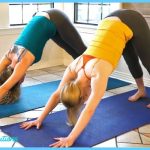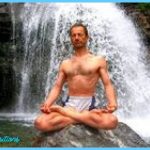Concentrating on feelings
By now you will have thoroughly learned how to feel the difference between a relaxed and a tense muscle, and you will realize that as muscles truly relax so does mental tension and stress. We started with exercises that focused on the legs because they give the easiest introduction to this experience. Today we will establish a systematic, easy to remember, relaxation programme for the whole body.
Because you know the feeling of a relaxed muscle, you can start with some ‘difficult’ muscle groups -head, neck and shoulders – and proceed to less difficult exercises in a simple top to toe manner.
Positions: Wherever possible in an exercise schedule it is a good idea to learn to relax on a couch or on a bed, or on the floor. You should also get used to relaxing on your back and on your side. This will give you added expertise in switching on to relaxation from tension at almost any time and in any circumstance. Start while lying flat on your back, and then repeat in another position.
1. Head and neck
a. Lie on your back, arms by your sides.
b. Press your head and elbows into the floor. As you lift your upper trunk slightly the back of your head and your elbows will feel its weight. Do this firmly but without straining. Lift on the in breath of your pendulum breathing.
c. As you exhale, drop back and savour the relaxed feeling.
d. Only do this exercise three times. On the fourth time imagine you are doing the tension-producing manoeuvre and again savour the relaxed response with a further three breaths. Then take six breaths, keeping with the relaxed response feeling all the time, but not remembering the exercise.
You will have spotted that you are again using the muscle-relaxing trick to learn the relaxation feeling. I have been careful, however, to reinforce the relaxation learning feeling in a way that overwhelms the tension side of the exercise.




